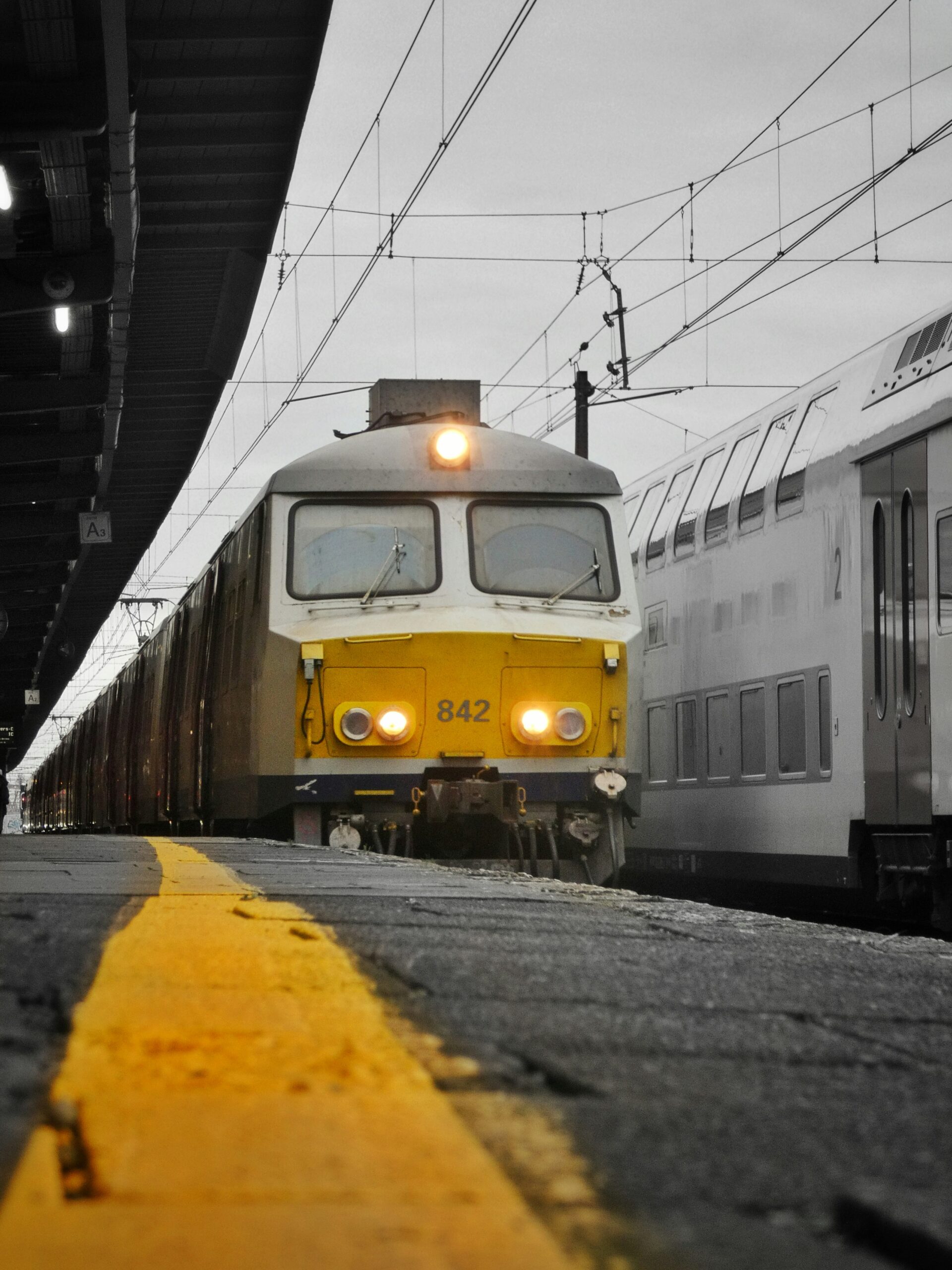What is Congestion Pricing?
Congestion pricing is an economic strategy implemented in urban areas to manage traffic congestion by imposing a fee on vehicles that enter high-traffic zones during peak hours. The primary objective of this pricing model is to reduce vehicular congestion, mitigate pollution, and promote the use of public transportation. By establishing financial disincentives for driving in busy areas, congestion pricing encourages commuters to reconsider their travel habits and opt for alternative transportation options.
The concept operates on the principle of demand management; as the number of vehicles on the road increases, the cost of entering congested areas also rises. This approach not only aims to decrease traffic volume but also seeks to allocate road space more efficiently, ultimately leading to reduced travel times and enhanced road safety. It has been successfully implemented in various cities worldwide, including London and Stockholm, where similar pricing models have demonstrated significant reductions in traffic, improved air quality, and increased public transit usage.
In New York City, a densely populated urban setting, congestion pricing is seen as a viable solution to alleviate chronic traffic challenges. Despite various proposals over the years, including recent advancements in technology to facilitate the system, the implementation process has often faced political and logistical hurdles. The specifics of New York’s approach will likely involve a variable pricing structure, taking into account the time of day and congestion levels. By leveraging the success observed in other metropolitan areas, New York aims to create a sustainable urban environment that balances economic vitality with the livability of its streets.
The Rationale Behind Congestion Pricing in NYC
Congestion pricing in New York City has emerged as a strategic response to persistently increasing traffic congestion, which poses significant challenges for urban mobility. First and foremost, the city’s roadways experience acute congestion during peak hours, leading to longer travel times and heightened stress for commuters. An innovative solution such as congestion pricing aims to manage the volume of vehicles entering dense urban areas, effectively encouraging individuals to consider alternative modes of transportation, including public transit, cycling, or walking.
Furthermore, environmental concerns have gained prominence in urban policy discussions. The transportation sector is one of the major contributors to greenhouse gas emissions. By implementing congestion pricing, New York City can reduce overall car usage within the most congested areas, thereby lowering emissions and improving air quality. The financial incentives embedded in congestion pricing not only decrease traffic volumes but also promote the use of electric vehicles and other eco-friendly transportation options.
Economic implications also underscore the necessity for congestion pricing. Traffic congestion incurs substantial costs, including increased fuel consumption, wasted time, and heightened maintenance expenses associated with road infrastructure. These factors contribute to an estimated annual loss in productivity worth billions. Implementing congestion pricing is projected to mitigate these losses, enhancing economic efficiency for both residents and businesses alike.
The revenue generated from congestion pricing is expected to be earmarked for enhancing public transportation systems. This initiative aligns with broader sustainability goals, allowing for investments in subways, buses, and other transit options. As a natural outcome, enhanced public transport services can attract more users, further alleviating roadway congestion. Through these multifaceted approaches, the rationale behind congestion pricing emerges as a well-rounded instrument designed to address critical urban challenges effectively.
History of Congestion Pricing Proposals in NYC
The concept of congestion pricing in New York City dates back several decades, reflecting the city’s ongoing struggle with traffic congestion and its effects on urban mobility. Early discussions can be traced to the late 1970s, when the idea of charging drivers for entering certain areas emerged as a potential solution to alleviate the growing gridlock in Manhattan. However, it wasn’t until the late 1990s that the proposals began gaining substantial traction, particularly with the establishment of the NYC congestion pricing task force in 1997.
In 2007, significant momentum was achieved with the unveiling of the “Sustainable Streets” program, which aimed to reduce congestion and improve environmental conditions. This initiative sparked heated debates among politicians, city planners, and the public, particularly regarding equity concerns and the potential economic impact on local businesses. Despite widespread support for the concept among transportation advocates, the proposal faced staunch opposition, complicating efforts for implementation.
Following several years of proposals and public discussions, the congestion pricing dialogue was revitalized with the release of the 2017 report by the Fix NYC Advisory Panel. This report outlined a comprehensive congestion pricing scheme aimed at reducing the volume of vehicles in Manhattan’s busiest areas. The plan garnered attention and was ultimately incorporated into Governor Andrew Cuomo’s 2019 budget proposal. Despite the proposed plan’s potential benefits, it encountered a series of political hurdles and public pushback.
In 2020, following modifications and renewed discussions, the Metropolitan Transportation Authority (MTA) received federal approval to implement the congestion pricing system, marking a significant milestone. The path to realizing congestion pricing in New York City highlights a complex interplay of policy-making, public opinion, and economic considerations, shaping the city’s strategies for managing urban traffic in the years to come.
Congestion Pricing and New York’s Current Infrastructure
New York City’s transportation infrastructure plays a pivotal role in the debate surrounding congestion pricing. This policy seeks to alleviate traffic congestion, particularly in Manhattan, by charging drivers a fee to enter designated zones during peak hours. However, the existing public transport systems present both challenges and opportunities that must be considered in the implementation of congestion pricing.
One of the primary challenges is the current state of the subway and bus systems. While New York has an extensive public transit network, it often grapples with overcrowding, delays, and aging infrastructure. The Metropolitan Transportation Authority (MTA) continues to prioritize improvements and expansions, yet as it stands, these services may struggle to accommodate an increased volume of riders that congestion pricing could introduce. Enhancing the reliability and capacity of public transport is essential to ensure that commuters have viable alternatives to driving, and thus can alleviate potential backlash against the pricing scheme.
On the other hand, congestion pricing presents a unique opportunity to generate significant revenue for transportation improvements. The additional funds raised could be directed towards enhancing bus and subway services, as well as investing in modern infrastructure projects such as signal upgrades and expanded transit options. This potential economic benefit allows for a re-imagining of New York City’s transportation strategies and could foster shifts towards more sustainable modes of transport, including walking and cycling.
Moreover, the anticipated reduction in vehicle traffic in congested areas is likely to lead to improvements in overall air quality and public health, aligning with broader urban sustainability goals. With a deft approach, congestion pricing can serve as a catalyst for transformation within New York’s existing transport systems, ultimately resulting in a more efficient, equitable, and environmentally friendly public infrastructure.
Trump Administration’s Stance on Congestion Pricing
The Trump administration’s perspective on congestion pricing in New York City was marked by a distinctive approach to taxation and infrastructure spending. Under President Donald Trump, there was a general skepticism towards tax-based solutions for urban issues. This skepticism was evident in how various transportation and infrastructural challenges were addressed during his tenure. Trump’s administration often prioritized deregulation and tax cuts as means to stimulate economic growth, rather than implementing new taxes or fees, such as congestion pricing, which could be perceived as an additional financial burden on drivers.
In the context of congestion pricing specifically, President Trump expressed opposition to the concept during his presidency. He argued that imposing fees on drivers for entering congested areas could be detrimental to the city’s economy and its residents. The administration maintained that rather than placing financial burdens on individuals, efforts should focus on broader fiscal reforms and prioritizing infrastructural investment through alternative funding methods. This perspective was shared by key officials within the administration who also highlighted concerns about how congestion pricing might disproportionately affect lower-income drivers, further complicating the public discourse surrounding the topic.
Potential Benefits of Congestion Pricing
Congestion pricing, a strategy aimed at reducing traffic congestion in urban areas, presents numerous potential benefits for cities like New York. One of the primary advantages is the significant reduction in traffic volume. By imposing fees on vehicles entering high-traffic zones during peak hours, cities can discourage unnecessary trips, ensuring that traffic flow remains manageable. This reduction in congestion leads to shorter travel times for commuters, thereby increasing the efficiency of the transport network.
In addition to alleviating traffic congestion, congestion pricing can play a pivotal role in improving air quality. Lower traffic volumes mean fewer emissions from vehicles, which directly correlates with a decrease in air pollutants. Improved air quality contributes to public health by reducing the prevalence of respiratory diseases and generally enhancing the well-being of city residents. As cities grapple with environmental challenges, implementing a congestion pricing model can serve as an effective component of broader sustainability initiatives.
Another critical benefit of congestion pricing is the potential for increased revenue generation. Funds collected from congestion fees can be earmarked for public transportation projects, including the expansion and enhancement of bus and subway systems. This reinvestment not only helps improve the existing infrastructure but also encourages more individuals to utilize public transport instead of personal vehicles, leading to a further decrease in traffic congestion.
Moreover, adopting a congestion pricing system can enhance urban life quality. By reducing the number of vehicles on the road, cities may experience less noise pollution and a more pedestrian-friendly atmosphere. This fosters community interaction and makes urban spaces more appealing for residents and visitors alike. In summary, congestion pricing could emerge as a multifaceted solution to various urban challenges, positively influencing traffic flow, environmental practices, and the overall quality of life in densely populated cities.
Challenges and Controversies Surrounding Congestion Pricing
Congestion pricing in New York City has ignited a variety of challenges and controversies that reflect the city’s diverse population and economic landscape. One of the primary concerns is public opposition, which stems from skepticism about the efficacy and fairness of this financial strategy. Many residents fear that the introduction of tolls in densely populated areas will exacerbate an already high cost of living, especially for lower-income individuals and families who may rely on driving for daily commutes. The concern is that congestion pricing could lead to a disproportionate burden on these communities, further widening the socioeconomic gap in a city where public transport accessibility is limited in certain neighborhoods.
Equity issues remain at the forefront of the debate. Critics argue that while congestion pricing aims to reduce traffic and pollution, it may inadvertently penalize those who have no alternative means of transportation. This raises moral questions about who bears the brunt of such policy changes. Advocates for affordable public transit options suggest that without sufficient investments in reliable alternatives, congestion pricing could disenfranchise vulnerable populations even further.
Additionally, significant backlash has come from various groups, including drivers who are already accustomed to high expenses related to vehicle ownership, parking, and traffic-related delays. Local businesses have also voiced concerns that congestion pricing might deter customers from entering certain areas of Manhattan, which could harm their livelihoods. These apprehensions are compounded by worries regarding enforcement and potential loopholes that could be exploited by financially better-off individuals, thereby undermining the intended purpose of the policy.
As New York City moves forward with implementing congestion pricing, ongoing discussions and negotiations will be essential to address these challenges effectively and ensure a balanced approach that considers the needs of all residents.
Case Studies: Success Stories from Other Cities
Congestion pricing has emerged as a viable solution to urban traffic challenges across the globe, with notable implementations in cities such as London, Stockholm, and Singapore. Each of these cities presents unique successful models that illustrate the effectiveness of this approach in alleviating congestion and improving urban mobility.
In London, the congestion charge was introduced in 2003, covering a designated central area. The initiative aimed to reduce traffic volume and encourage the use of public transportation. A study post-implementation demonstrated a significant drop in traffic levels by approximately 30%, alongside a remarkable increase in public transport utilization. London’s model highlights the importance of clear communication and public awareness regarding changes, showcasing that stakeholder engagement is critical for acceptance and successful adaptation.
Similarly, Stockholm’s congestion tax, implemented in 2007, also displayed prudent planning and execution. This system charges vehicles entering or exiting the city center during peak hours, and results indicated a 20-25% decrease in traffic congestion. The city employed dynamic pricing, adjusting fees based on real-time traffic conditions, which aided in managing road usage effectively. The political consensus achieved prior to the rollout proved vital, as it fostered a collaborative environment that ensured sustained public support and compliance.
Singapore stands out with its sophisticated Electronic Road Pricing (ERP) system, introduced in 1998. This system employs a network of gantries equipped with sensors and cameras, charging vehicles based on their road usage during peak hours. With real-time data facilitating adaptive pricing, Singapore has managed to maintain satisfactory traffic flow even amidst rapid urbanization. The success of ERP is attributed to continuous upgrades in technology and management practices that respond not just to congestion but also to broader ecological considerations.
Through these case studies, it becomes evident that NYC can adopt valuable insights from the experiences of successful congestion pricing cities. Key takeaways include the incorporation of dynamic pricing models, establishing clear communication strategies with the public, and ensuring political unity for enhanced project longevity and effectiveness.
The Future of Congestion Pricing in New York City
As New York City moves forward with the implementation of congestion pricing, ongoing developments suggest a complex landscape for traffic management and urban mobility. The future of this pricing model will be shaped not only by legislative efforts but also by public sentiment and urban planning strategies.
Currently, the New York State legislature is pushing to refine the legislative framework that governs congestion pricing. This includes discussions on potential exemptions, varying rates based on vehicle type, and provisions aimed at protecting low-income commuters. The city officials and policy makers must engage stakeholders in comprehensive dialogues to address concerns and aspirations related to congestion charging. Transparency in the decision-making process will likely bolster public trust and acceptance of this initiative.
Public opinion remains a crucial factor in the prospective success of congestion pricing. A significant portion of the NYC population acknowledges the benefits of reducing traffic congestion and enhancing air quality, but there is also apprehension regarding its economic impact. Reasons for these anxieties often stem from fears that heightened costs for entering congested zones could disproportionately affect lower-income individuals. Utilizing outreach campaigns to educate the public on the long-term benefits of congestion pricing alongside equitable solutions can ease these concerns and foster a more supportive environment.
Moreover, as urban landscapes evolve with new technological advancements, the integration of congestion pricing could adapt accordingly. For instance, developments in smart city technologies may allow for dynamic pricing models that respond in real-time to traffic conditions, thereby optimizing traffic flow more efficiently. Such innovations are anticipated to play a significant role in mitigating the challenges currently faced in urban traffic management.
In conclusion, the trajectory of congestion pricing in New York City hinges on legislative developments, public acceptance, and the ability of policymakers to adapt to the changing urban landscape. Proper implementation and societal buy-in will be paramount in shaping a sustainable future for one of the world’s busiest metropolises.



